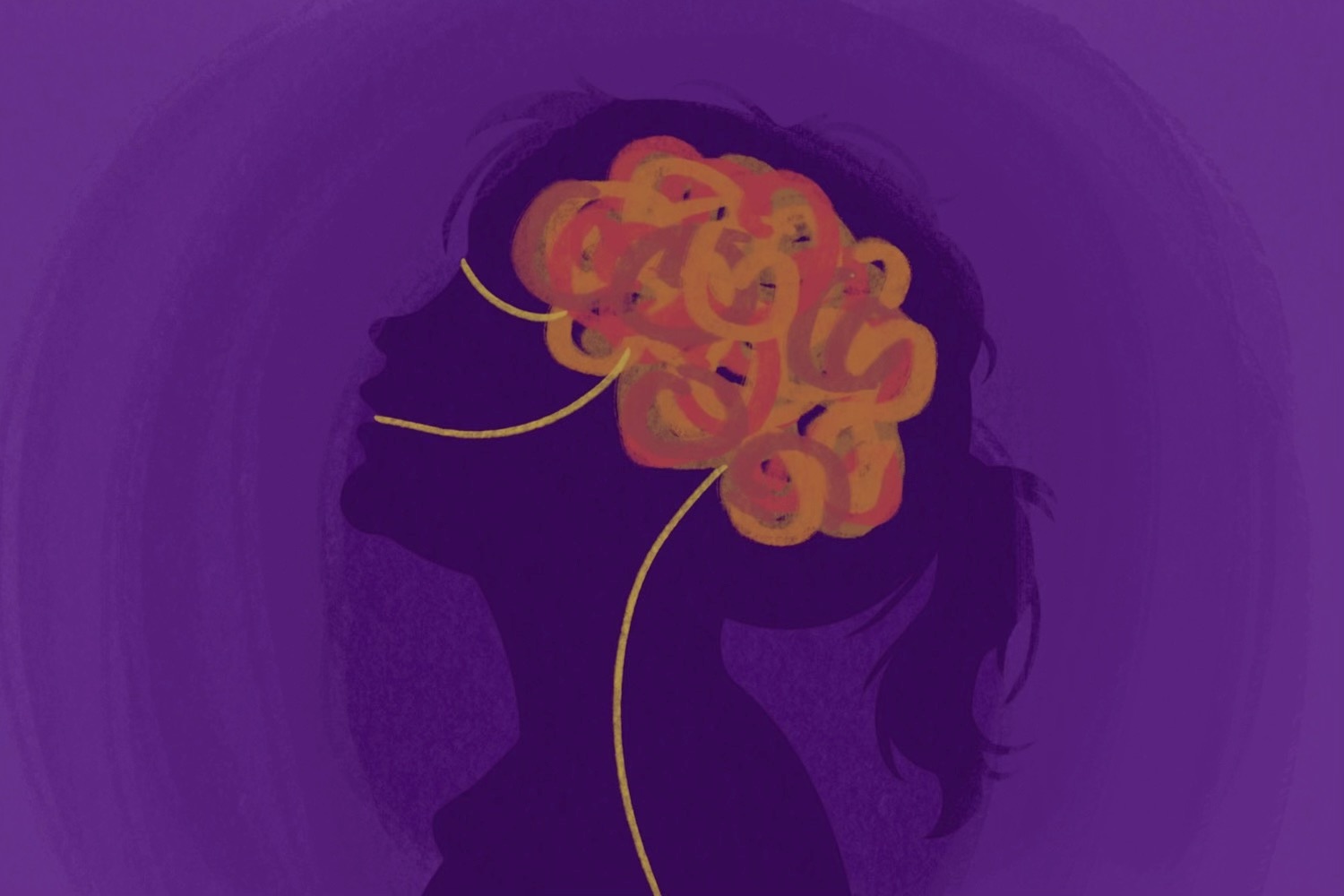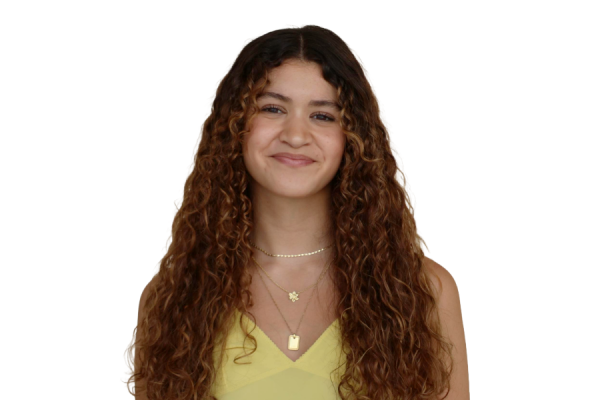A young boy’s sobs echo throughout the house. His hand desperately clings to the edge of his bright red Lightning McQueen bed. Tearfully, the boy begs his mom not to take him to school, all because he hates being different.
This was the daily routine one student described in their eighth-grade graduation speech before enrolling at Charles Armstrong, a private school located in Belmont, California, catering to students with dyslexia and similar conditions. Unfortunately, this student’s sentiments are not a unique experience.
According to the Learning Disabilities Association of America, approximately one in five children in the U.S. have learning and attention issues like Dyslexia and Attention Deficit Hyperactivity Disorder (ADHD). While it is well known that these conditions impact a student academically, their social and emotional effects during childhood are not as commonly known.
Dyslexia is the most common learning difference and represents at least 80% of people with learning differences, according to the National Library of Medicine. However, dyslexia is only one of the seven different types of specific learning differences (SLDs).
While ADHD is not considered a learning difference, it is common for the two to coexist, as 45% of kids with ADHD also have a learning difference compared to only 5% percent of kids without ADHD, according to Understood.
“It’s called comorbidity. There’s a lot of multiple diagnoses for people, especially being dyslexic, and ADHD is number one as a comorbidity,” said Andrea Edwards, the director of advancement at Charles Armstrong.
Social skills develop through observations of adults and interactions with parents and peers. For children with learning differences, facilitating the growth of social skills is challenging, especially for kids with both dyslexia and ADHD.
For people with dyslexia, up to 50% report struggling with social interactions, according to Ambitions. This may result from dyslexic children struggling to find the right words, misremembering things, taking longer to process things conversationally, and missing social cues, body language, or facial expressions.
For children with ADHD, it is estimated that around 50-60% face social rejection from their peers, according to the National Library of Medicine.
Similarly to dyslexia, ADHD may cause kids to miss social cues and body language due to their inattentiveness. They may frequently misinterpret conversations due to their impulsivity and find it extremely difficult to wait their turn due to their hyperactivity.
While kids with learning differences and attention disorders do not purposely act this way, their peers may find these traits frustrating, making it difficult to form and maintain relationships with family, friends, and peers.
Suffering from social rejection makes students with learning differences more susceptible to bullying, as three in five kids with a disability are bullied, compared to one in five without a disability, according to Law Firm.
Over time, comments such as ‘You’re stupid’ or ‘You’re dumb’ slowly chisel away at a child’s confidence, sculpting a once eager-to-learn kid into an insecure and withdrawn student.
“In school, the comments people made telling me I was stupid, an idiot, dumb, all became true in my mind. I went from raising my hand all the time to never raising it at all,” said Amelia Thomas* in her graduation speech from Armstrong.
Before being diagnosed with dyslexia and enrolling at Armstrong in fourth grade, Thomas attended a Spanish immersion school from kindergarten to third grade. Despite speaking and understanding Spanish fluently, she struggled intensely with reading and writing, which seemed to be a sixth sense for her peers.
“In second and third grade I tried to do my homework of reading for 30 minutes every night. I would sit down, set the timer, and truly try like my life depended on it. And then, I would cry. I just couldn’t do the simplest thing,” Thomas said. “They found it simple, I did not. They found it easy, I did not. They figured it out, I did not.”
Without the proper resources to support students facing challenges similar to Thomas’, students with learning differences form a negative relationship with school and eventually figure out ways to avoid their school work.
For Thomas, this manifested in an intense passion for soccer.
“I would go to two practices every day. I had a two-hour practice directly after school and then found myself in the car telling my mom ‘I’ll do it later!’ as I ran off to the next practice for another two hours,” Thomas said.
Like so many other kids, the social and academic pressure for Thomas to perform at the same level as her neurotypical peers became unreachable and overwhelming.
Each failure chipped away at her desire to learn until it seemed her only option was to give up.
Broken systems
While the goal of special education is to give all students equal opportunities to receive an education that helps them thrive, more often than not, these programs are poorly run and do more harm than good.
“In theory, it should be that students are getting more specialized instruction based on their disability and are being given instruction by someone who’s trained in special education,” said Erica Salzman, a nationally certified school psychologist based in Los Angeles.
In practice, 60% of first-year special education teachers are working without a complete teaching credential as of 2017-2018, according to the Commission on Teacher Credentialing. Due to their limited experience, they are highly overwhelmed and cannot provide their students with high-quality special education.
Another contributing factor to the poor quality of special education is the approximately 25% turnover rate for special education teachers, according to the Iris Center. Due to not having a consistent teacher in the classroom, students are less supported, their individualized education plan (IEP) accommodations may not be met, and their academic achievement is hindered.
For children with learning differences in general education classrooms, their teachers may be educationally qualified but lack the proper training to help them thrive.
Some school districts have mandated that students with learning differences receive the specialized help they would otherwise be pulled out of class for within general education classrooms. While they may seem more inclusive, districts often do not adequately train teachers.
“Districts are like, look, 80% of our kids are included, but the teachers don’t know what they’re doing. It looks good on paper but a lot of it is just for show,” Salzman said.
Additionally, some teachers may not fully understand or outwardly refuse to provide students with accommodations, something Salzman has encountered at her job.
Last year, she was working with a student who had an IEP for her ADHD and anxiety. The class was assigned to write multiple sentences using a list of vocabulary words to demonstrate their understanding.
Due to the very repetitive nature of the assignment, the student would have significantly struggled to complete it because of her ADHD. In response, Salzman suggested the teacher allow the student to demonstrate her understanding of the vocabulary through a comic, among other accommodations.
“Let her do half as many words. Let her have a break after she does five words. I made a whole plan, and this teacher refused, saying, ‘No, that’s not fair. Why should she be able to do that when nobody else can?’” Salzman said.
Salzman’s request was not unreasonable. Instead, they fall under the umbrella of standard ADHD accommodations, according to the CDC, like instructions and assignments tailored to the student and giving the student breaks or time to move around.
Accommodations like these are vital to the academic success of students with learning differences as they provide the necessary boost to create an even playing field for neurodivergent and neurotypical students to achieve the same levels of academic success.
“Would you take away someone’s glasses if they couldn’t see the board?” Salzman said.“If a student can’t see very well, you give them glasses. That’s like an accommodation, it’s a tool that helps them be able to see the board.”
A community offering support
A young boy sits alone in the back of his second-grade class. He is confused, not knowing what else to do but twiddle his thumbs.
He glances up, a perplexed look painted on his face, as his eyes slowly scan the room. While his classmate’s thoughts flow smoothly from their brains to their pencils and onto the page, he is left with doodles of rainbows on the side of his paper.
“His teacher didn’t know how to teach him, so I guess she just decided to let him be,” said Ben Jordan* in his graduation speech from Armstrong.
This is not the story of just any boy; that confused little kid was Jordan.
“I was pulled out of class often for special support, and was in the lowest math, language, and reading class,” Jordan said. “School was tough for me, but it didn’t seem tough for everyone else. I hated being different, having to ask a ton of questions, and needing extra help. All I wanted was to fit in.”
One day, things seemed to change. Jordan shadowed a new school called Charles Armstrong, and for the first time in his life, he felt something unfamiliar — a sense of belonging.
“I remember three things that were great about my first day. I said learning was fun, I wasn’t confused all day, and everyone needed as much help as I did,” Jordan said.
On Aug. 27, 2018, Blake Bottarini, a 17-year-old senior at Serra High School, tragically passed away after getting into a car accident on his way to school.
“At this point in his life, Blake was happy, confident, and motivated. Family and friends meant everything to Blake, and he loved spending time with them and his twin brother Evan,” Julie Bottarini, Blake Bottarini’s mother and founder of the Blake Memorial Foundation (BMF), said on the BMF website.
However, this was not always the case. When Blake Bottarini was in first grade, his dyslexia and ADHD led him to struggle with reading, writing, and penmanship.
Frustrated, he began to get in trouble for being distracted, disruptive, and not completing his work. The school did its best to help, providing Blake Bottarini and his brother with tutoring at its resource center, but it wasn’t enough.
Eventually, Blake Bottarini’s parents discovered the Charles Armstrong School. The boys thrived there, boosting their confidence as they were taught based on their unique experiences with dyslexia and ADHD.
“One in five children are dyslexic, and for these children developing reading skills can be very challenging. Many schools do not have resource centers and trained teachers to identify and support students with learning differences,” Julie Bottarini said.
While Julie Bottarini and her family were lucky and could afford diagnostic testing and tutoring to help their boys, many families are less fortunate.
“Blake Memorial Foundation is committed to making a difference in the lives of these students. The funds raised by BMF will help students develop their gifts and strengths through community education, evaluations, teacher training, and related community services,” Julie Bottarini said.
In collaboration with Charles Armstong, BMF offers two programs aimed at helping teachers teach students with SLDs and providing scholarships to students in need.
Julie Bottarini’s charitable work is vital as Charles Armstrong and similar schools have a lasting impact on their students. By the end of Jordan’s journey at Armstrong, he had one message to share with his fellow students.
“As we are all graduating from Armstong we shouldn’t hear ‘disability,’ we should hear ‘this ability.’ The ability to see the world from a different perspective. The ability to use the tools that we have learned, such as advocating for what we need. The ability to use a growth mindset, the ability to stand up for what’s right, and the ability to face the future with confidence,” Jordan said. “Thank you, Armstrong, for being my home away from home.”
*This source’s name is changed to protect them from social consequences. For more information on Carlmont Media’s anonymous sourcing, check out Scot Scoop’s Anonymous Sourcing Policy.




